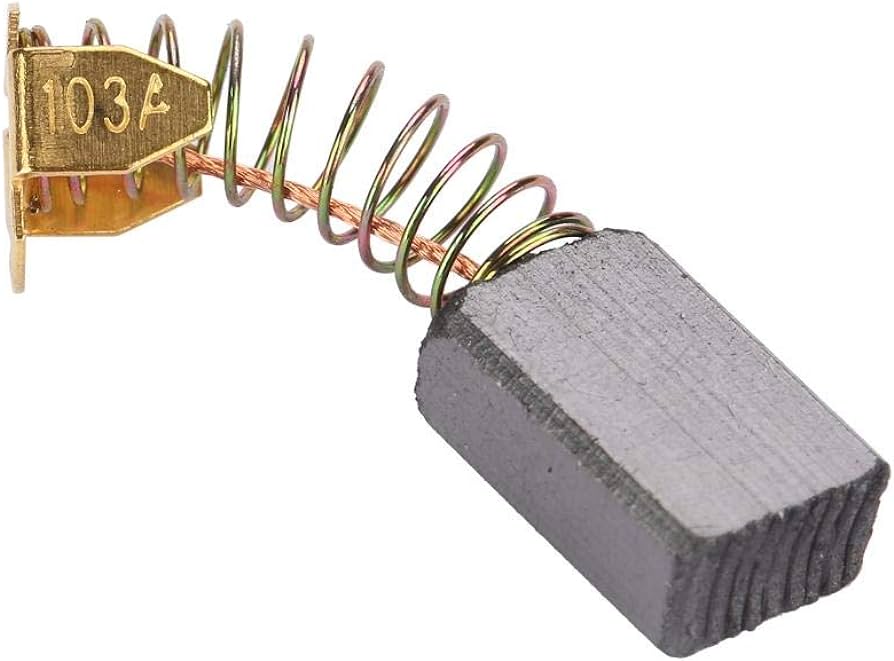Collector Rings play a fundamental role in the operation of various machinery and applications, acting as a vital component for the transmission of power and signals in rotating devices. This article delves into the essence of collector rings, discussing their design, functionality, and the critical selection of materials, which ensure their optimal performance. By exploring the extensive use of collector rings across industries—such as in wind turbines, rotary tables, and electrical generators—readers will gain insights into their indispensable nature. Furthermore, the piece sheds light on maintenance practices crucial for preserving the efficiency and longevity of these components, alongside addressing common challenges encountered in their upkeep. Advances and innovations in collector rings technology are also examined, highlighting trends in materials science and electrical engineering that pave the way for enhanced capabilities. Lastly, the article provides guidance on choosing the right collector rings for specific needs and offers a look into the future of these devices amidst evolving technological landscapes.
Getting to Know Collector Rings
Collector rings, often referred to as slip rings, electrical swivels, or rotary electrical interfaces, play a vital role in a myriad of machines that require the transmission of power and electrical signals from a stationary to a rotating structure. Imagine a wind turbine blade that spins endlessly or a medical CT scanner as it rotates around a patient; these are but two examples of where the seamless and continuous function of machinery hinges on the reliable performance of collector rings.
These rings ensure that systems requiring both rotation and electrical power can operate without the limitations of tangled wires or the need for frequent maintenance. They are the unsung heroes residing in the junctions of complex apparatuses, providing the electrical connectivity necessary for power and data transfer across moving joints.
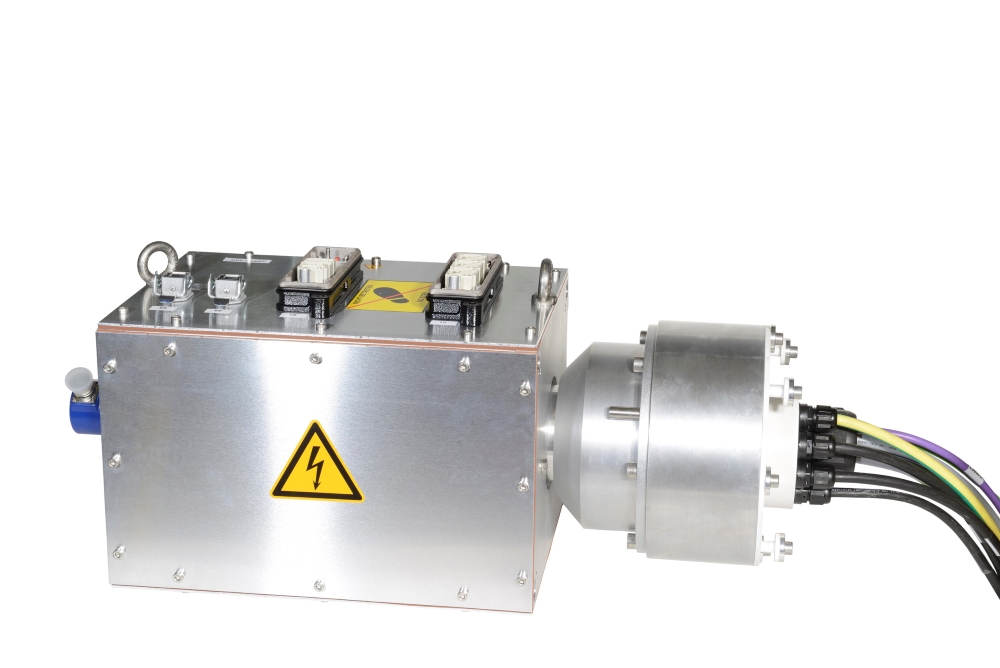
Collector rings are pivotal because they allow for the uninterrupted functioning of rotating machinery, which is critical in today’s advanced and automated industries. Their role becomes apparent when we consider the alternative—a world where the transfer of electricity between moving parts is hindered by constant disconnections or the rapid wear-and-tear of components. Collector rings sidestep these issues by maintaining a constant electrical connection, even as the machine parts move in different directions or at varying speeds.
One illustrative example is the use of collector rings in the aerospace industry, where they are built into aircraft to ensure that critical systems, such as those used for communication or control surfaces, remain operational even as parts of the plane move independently. Another instance is their application in industrial production lines, where robotic arms perform complex tasks requiring both rotation and electrical power; collector rings facilitate this intricate dance by supplying a steady electrical current to the moving parts.
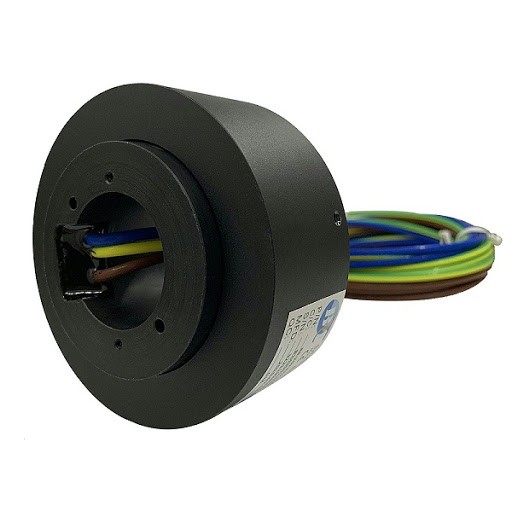
At a glance, collector rings might seem like simple connectors, but their impact on the efficiency and capability of advanced machinery cannot be overstated. They are the linchpins within rotating devices that keep the lights on and the wheels turning—literally. In the subsequent chapters of this article, we will delve into their design, explore their applications, and even uncover the cutting-edge advancements that are setting the stage for the next generation of collector rings.
What is Collector Rings: A Deep Dive into Design and Functionality
Collector rings, the cornerstone of rotational electrical continuity, exemplify engineering ingenuity, marrying mechanical complexity with electrical sophistication. At the heart of countless machines that define modern life, from the towering wind turbines to the precision of medical imaging systems, lies the elegant simplicity of collector ring design.
The Inner Workings: Unveiling the Magic
To demystify how collector rings function, let’s explore their design with a technical lens. Envision a ring, composed of conductive material, mounted on a rotating shaft. This ring rotates in unison with the shaft, presenting a constantly moving electrical pathway. Stationed in proximity, yet standing still, are the brushes—typically composed of a softer, yet highly conductive material. These brushes gently press against the ring, their contact facilitated by the ring’s motion.
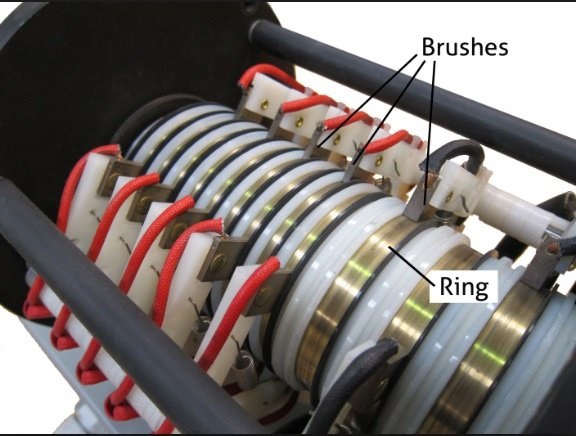
As the ring rotates, the brushes maintain continuous contact, enabling the transfer of power or data across the moving interface. This dynamic allows machines with rotating parts to operate seamlessly, without the hindrance of tangled wires or interrupted signals. For instance, in the realm of wind turbines, collector rings transmit the power generated from the high-altitude blades down to the base, all while facing the brute force of relentless rotation and environmental challenges.
Choosing the Right Material: A Balancing Act
The choice of materials for both the ring and brush components is pivotal, guided by a matrix of electrical and mechanical considerations. Here’s a closer look:
- Electrical Conductivity: The primary criterion is the efficient transmission of electricity. Copper stands out as a favored choice due to its outstanding conductivity and relative affordability. For applications demanding the utmost in performance, especially where minimal electrical resistance and loss are crucial, silver or even gold-plated rings come into play, despite their higher cost.
- Durability and Wear Resistance: The operational lifespan of collector rings hinges on their resistance to wear. Here, the material’s hardness and the ability to withstand the environmental conditions of its application are crucial. Bronze alloys, for example, offer a good compromise between conductivity and longevity, often serving in industrial environments where the balance of performance and durability is key.
- Compatibility and Corrosion Resistance: The material’s ability to resist environmental factors such as humidity, temperature variations, and corrosive elements is vital. In maritime applications or in medical devices where sterility and corrosion resistance are paramount, stainless steel coated with a conductive layer, or even specialty alloys, might be employed.
Real-World Applications: The Wind Turbine Scenario
Consider the case of modern wind turbines, a testament to the critical role of collector rings. These turbines, often situated in remote, harsh environments, rely on collector rings to transfer generated power from the rotating nacelle to the stationary base. The materials selected for these rings have to not only ensure efficient energy transfer but also withstand the relentless forces of nature, from freezing temperatures to salt-laden sea breezes.
Navigating Challenges and Misconceptions
A common misconception is that the wear and tear on collector rings are solely due to mechanical friction. In reality, the electrical arcing and the environmental conditions also play significant roles. Through strategic material selection and innovative design—such as incorporating self-lubricating brushes or designing rings with multiple contact points—the longevity and reliability of collector rings can be significantly enhanced.
Collector rings embody a fascination intersection of mechanical design and electrical engineering, crucial for the operation of rotating machinery. The journey from choosing the right material to implementing designs that withstand real-world challenges underlines the importance of a nuanced approach—a blend of practicality, innovation, and relentless optimization. As technology marches forward, the evolution of collector rings will continue to play a pivotal role in powering the machines at the forefront of human progress.
Revolutionizing Industries: The Ubiquitous Role of Collector Rings
Powering the Giants: Wind Turbines
In the realm of renewable energy, wind turbines stand as towering harbingers of a greener future. These giants, however, owe much of their functionality to the humble collector ring. Situated between the nacelle and the tower, collector rings play a crucial role in transferring the electric power generated from the wind-blown blades down to the grid.
Case Study: The Offshore Wind Farm Revolution
Consider the case of the Hornsea Project One, currently the world’s largest offshore wind farm located in the North Sea. Spread across an area over 400 square kilometers and consisting of 174 turbines, this monumental project underscores the critical role of collector rings. The reliable operation of these turbines, often in hostile sea conditions, showcases the durable and efficient design of modern collector rings. They ensure not just the transmission of power but also the operational data and control signals necessary for optimal performance and maintenance.
On the Move: Rotary Tables in Manufacturing
The precision and efficiency of modern manufacturing are heavily indebted to the use of rotary tables, particularly in metalworking and assembly lines. Collector rings here ensure that even while the table spins to various positions for machining or assembly, power and control signals can be supplied continuously without interruption.
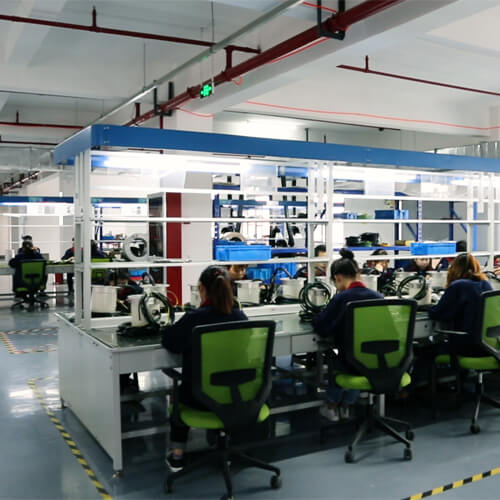
Real-World Example: Automotive Assembly Lines
Take a peek into the automotive manufacturing industry, where time and precision are of the essence. Collector rings in rotary tables allow for seamless operation of automated robotic arms and tools, enabling the swift assembly of car parts. This continuous operation significantly reduces production time and enhances efficiency, ensuring that the demanding schedules of automotive production are met.
Generating Possibilities: Electrical Generators
Electrical generators, from those housed in vast power plants to portable units, rely on collector rings to deliver generated power efficiently. In these applications, collector rings facilitate the transfer of electricity from the rotating armature to the stationary external circuit, enabling our homes and industries to be powered.
Highlight: The Hydroelectric Power Plant
Consider the grandeur of the Hoover Dam, a paragon of hydroelectric power. Within its depths, massive generators convert the mechanical energy of flowing water into electricity. Collector rings here are pivotal, managing the high-current transfer required to feed the grid. This real-world marvel not only illuminates the indispensable role of collector rings in energy generation but also their contribution to sustainable power solutions.
Addressing Misconceptions and Advancing Knowledge
A common misconception is that collector rings are prone to rapid wear and require frequent maintenance. While it’s true that wear can be a concern, modern engineering advancements in materials and designs have significantly increased the lifespan and reliability of collector rings, reducing maintenance needs.
Ensuring Peak Performance: Expert Maintenance Tips for Collector Rings
Regular Cleaning : The First Line of Defense
Importance: Dust, debris, and chemical deposits can severely degrade the contact quality between the brushes and the ring, leading to increased resistance, heat generation, and potential failure.
Advice: Implement a cleaning schedule based on the operating environment’s cleanliness level. For collector rings in dusty or outdoor settings, such as those in wind turbines or construction equipment, a monthly inspection and cleaning may be prudent. For cleaner environments, a bi-annual schedule might suffice.
Procedure: Use a soft, lint-free cloth slightly dampened with an electrical cleaning solvent. Gently wipe the surface of the rings and brushes to remove any accumulated grime. Ensure the system is powered down and fully stopped to avoid injury.
Inspection and Replacement of Brushes
Common Issue: Worn brushes fail to make proper contact with the ring, which can interrupt electrical flow and lead to system inefficiencies or shutdowns.
Advice: Regularly inspect brushes for wear and replace them as per the manufacturer’s recommendations or sooner if you notice significant wear. Monitor for uneven wear patterns, which can indicate misalignment.
Real-World Example: Consider a manufacturing facility relying on automated assembly lines. A routine inspection revealed uneven brush wear, indicating a misalignment issue. Early detection and correction prevented a potential halt in production, exemplifying the importance of preventive maintenance.
Ensure Proper Alignment and Tension
Troubleshooting Tip: Misalignment between brushes and the collector ring can lead to uneven wear, sparking, and electrical noise. Inadequate tension might cause the brushes to bounce or lose contact, while excessive tension can accelerate wear.
Advice: Refer to the manufacturer’s guidelines for the correct alignment and tension settings. Regular checks should be conducted to ensure these parameters remain within specifications. Utilize alignment tools if available, and adjust the brush holder mechanism as necessary to maintain optimal contact.
Monitoring Electrical Properties
Key Point: Changes in electrical properties such as resistance or the presence of excessive noise can be early indicators of issues with the collector ring or its system.
Procedure: Periodically measure the resistance and check for electrical noise across the collector ring circuit. Significant deviations from baseline readings could signal a problem, such as dirt buildup, wear, or damage. For critical applications, consider installing continuous monitoring equipment to alert maintenance teams to issues as they arise.
Addressing Misconceptions: It’s a common belief that once installed, collector rings require minimal to no maintenance. However, environmental conditions, operational wear, and tear, and unforeseen electrical issues necessitate regular checks and maintenance to ensure optimal performance and lifespan.
Beyond Maintenance: The Path to Reliability
Taking proactive steps in cleaning, inspection, alignment, and monitoring goes beyond mere maintenance; it’s about ensuring the reliability and efficiency of the systems that collector rings support. Whether it’s a wind turbine generating renewable energy or an assembly line manufacturing essential goods, properly maintained collector rings are foundational to performance and productivity. Through the integration of these maintenance tips into regular service routines, users can not only prevent common issues but also extend the operational life of their collector rings, ensuring that these critical components continue to facilitate the seamless function of rotating machinery across industries.
Elevating Efficiency: Cutting-Edge Innovations in Collector Rings Technology
The field of collector rings, essential in the seamless operation of myriad rotating machinery, is witnessing remarkable advancements. Driven by developments in materials science and electrical engineering, these innovations are set to redefine the efficiency, durability, and application spectrum of collector rings. Delving into recent technological progress and emerging trends, this chapter aims to shed light on how these advances are poised to transform industries. Using real-world examples and insights into the science behind these developments, we explore the future of collector ring technology.
Enhanced Materials for Increased Durability
Trend: The use of advanced composite materials and new metal alloys.
Development: Research in materials science has led to the creation of composite materials that are not only more conductive but also resistant to wear and environmental damage. New metal alloys and ceramic composites can withstand higher temperatures and are less prone to oxidation.
Example: In the aerospace industry, where collector rings must endure extreme conditions, advanced ceramics are being used to reduce wear and prolong the service life of components in satellites and aircraft.
Smart Collector Rings with Integrated Sensors
Innovation: The integration of sensor technology into collector rings.
Functionality: These “smart” collector rings are capable of monitoring their own health and operational status, providing real-time data on wear levels, temperature, and electrical performance. This information can be used to predict failures and schedule maintenance proactively.
Case Study: A leading wind turbine manufacturer has recently integrated sensor-laden collector rings in their turbines, enabling predictive maintenance algorithms that have reduced downtime by 15% and maintenance costs by 20%.
Superconductive Collector Rings
Breakthrough: Application of superconductive materials in the design of collector rings.
Advantages: Superconductors eliminate electrical resistance, drastically reducing energy losses and improving the efficiency of power transmission systems. They operate at higher current densities and lower temperatures.
Real-World Application: Experimental superconductor-based collector rings are being trialled in naval propulsion systems, promising a revolution in the efficiency and size of marine electrical systems.
Nanotechnology and Surface Coatings
Trend: Utilization of nanotechnology for surface enhancement.
Benefits: Nano-coatings on collector rings dramatically reduce friction and wear, which are perennial issues in traditional designs. These coatings are engineered at a molecular level to provide unparalleled resistance to breakdown and environmental factors like humidity and salt.
Example: An industrial machinery company has employed titanium nitride nano-coatings to extend the lifespan of collector rings used in mining equipment, resulting in a 30% decrease in maintenance-related downtimes.
Modular Collector Ring Systems
Innovation: Design shifts towards modular, easily replaceable collector ring units.
Impact: This approach simplifies maintenance and replacement processes, reducing system downtime. Modular designs also allow for easier upgrades as new advancements become available.
Implementation: In the manufacturing sector, companies are adopting modular collector ring systems that can be quickly swapped during routine maintenance cycles, significantly enhancing production uptime and flexibility.
The Future Is Now: Realizing the Potential
These technological advancements signify a substantial leap forward in the functionality and role of collector rings in modern industry. By embracing these innovations, industries can achieve higher efficiency, reduced maintenance costs, and improved sustainability. As materials and technologies continue to evolve, the potential applications of advanced collector rings will expand, pushing the boundaries of what’s possible in electrical and mechanical engineering.
These innovations not only address common challenges such as wear and efficiency but also open new avenues for the application of collector rings, ensuring that they remain indispensable components of modern machinery. The integration of smart technologies and advancements in materials science heralds a new era for collector rings, promising exciting possibilities for the future of industrial operations.
Choosing the Right Collector Rings: A Complete Guide
In the dynamic and complex landscape of rotating machinery, selecting the ideal collector ring is pivotal to ensuring operational efficiency, reliability, and longevity. Given the diverse array of collector rings available, tailored to various applications, making an informed decision requires a deep understanding of several critical factors. This chapter aims to demystify the process, offering guidance on choosing the perfect collector ring for your needs, comparing different brands and types, and showcasing real-world applications to illustrate key points. Let’s embark on a journey to find your ideal collector ring match, navigating through the technicalities with ease and precision.
Knowning Your Application: The Starting Point
Key Considerations: Before diving into the specifics, it’s crucial to outline your application’s requirements. Consider load capacity, operational speed, environmental conditions, and the electrical characteristics needed for your machinery. These factors form the foundation of your selection process.
Load Capacity and Speed: Matching Specifications
Factor Insight: Collector rings are designed to handle varying electrical loads and mechanical speeds. High-speed applications, such as those in turbine generators, demand rings engineered for minimal friction and wear at elevated velocities. Conversely, heavy-load applications, like cranes or mining equipment, require collector rings with robust construction and high-current handling capabilities.
Real-World Example: A manufacturing plant utilizing high-speed drilling machines opted for collector rings designed for high rotational speeds, significantly reducing wear and maintenance needs, thereby enhancing production uptime.
Environmental Resilience: Tailoring to Conditions
Guidance: The operating environment plays a significant role in your selection. Harsh conditions such as high humidity, salt exposure, or extreme temperatures necessitate collector rings with specialized materials and protective coatings to prevent corrosion, wear, and thermal degradation.
Case Study: A coastal wind farm faced challenges with collector ring corrosion due to the salty air. By switching to rings with marine-grade corrosion resistance, they effectively doubled the service life of their wind turbines.
Electrical Performance: Ensuring Compatibility
Consideration: Electrical requirements such as voltage, current capacity, and insulation strength are paramount. Advanced materials like silver-graphite offer improved conductivity and lower resistance, ideal for high-performance applications.
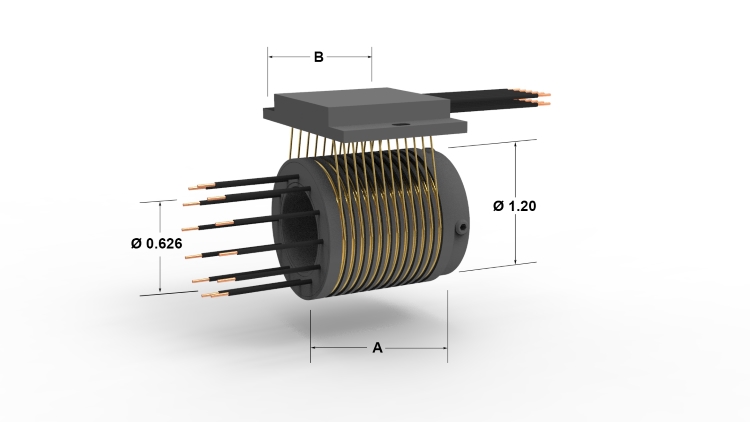
Insight: An electric vehicle manufacturer exploring improvements in their charging station efficiency selected collector rings with superior electrical characteristics, including low-resistance materials, to support faster charging times and reduce energy loss.
Comparative Analysis: Brands and Types
While brand might not always be the primary decision driver, it’s essential to recognize the value of reliability and support that comes with reputable manufacturers. Comparing different brands and types, such as slip rings, pancake rings, and wireless collector rings, involves assessing their track record in your industry, availability of technical support, and compatibility with your specific requirements.
Advice: Researching industry forums, reviews, and case studies can provide insights into the performance and reliability of collector rings from various manufacturers. Engaging with technical sales representatives can also offer valuable guidance tailored to your application.
Addressing Common Questions and Misconceptions
Misconception: One might think that all collector rings are created equal and that selection is merely a matter of matching electrical specifications. However, factors like design quality, material engineering, and additional features such as integrated sensors for condition monitoring significantly influence performance and longevity.
Actionable Advice: Compile a list of your equipment’s exact requirements, including environmental conditions and operational parameters. Use this list to engage with manufacturers or distributors, asking specific questions about how their offerings align with your needs.
Making the Informed Decision
Choosing the right collector ring is more than a technical necessity; it’s a strategic decision that impacts the efficiency, durability, and cost-effectiveness of your operations. By thoroughly understanding the nuances of load capacity, environmental resilience, and electrical performance, and by considering the reputation and support offered by various brands, operators can ensure their machinery runs smoothly and efficiently. Remember, the most suitable collector ring for your application is the one that best fits the unique combination of your operational demands and environmental conditions, ensuring uninterrupted performance and long service life.
Embracing the Horizon: The Evolutionary Future of Collector Rings
In the ever-evolving landscape of technology, the realm of collector rings stands on the brink of transformative change. The integration of advanced materials, the rise of smart machinery, and the relentless push towards sustainability are shaping a future where collector rings not only perform their traditional roles but also transcend them to become critical components in the next generation of technological innovations. This chapter delves into the emerging trends, potential applications, and speculative innovations that are set to redefine the use and design of collector rings.
The Dawn of Material Innovation and Advanced Applications
Next-Generation Materials: Future collector rings are poised to benefit from breakthroughs in materials science, including the development of ultra-conductive materials and nanotechnology-enhanced coatings. These advancements promise to dramatically improve efficiency, reduce electrical losses, and significantly extend the lifespan of collector rings.
Expanding Horizons of Applications: As technology progresses, new applications for collector rings emerge in fields as diverse as renewable energy, space exploration, and even medical devices. For instance, in the burgeoning sector of renewable energy, collector rings could play a pivotal role in next-gen wind turbines designed for higher efficiency and lower maintenance requirements.
Smart Machinery and the Internet of Things (IoT): A Connected Future
The era of IoT and smart machinery heralds a transformative phase for collector rings. With the integration of sensors and advanced communication technologies, collector rings are set to become intelligent components capable of self-diagnosis, real-time monitoring, and predictive maintenance.
Intelligent Monitoring and Maintenance: Imagine collector rings that can predict their own maintenance schedules, detect potential failures before they occur, and seamlessly integrate with the larger machinery management systems. This level of autonomy and intelligence in collector rings could significantly enhance the operational efficiency and reliability of rotating machinery across industries.
Case Study: A leading industrial machinery manufacturer has recently begun embedding IoT-enabled collector rings in their equipment. These smart collector rings provide continuous data on performance metrics, wear and tear levels, and environmental conditions, enabling predictive maintenance and reducing unscheduled downtime.
Speculative Evolution: The Role of Collector Rings in Future Technologies
As we project into the future, it’s exciting to speculate on the potential transformations in the design and application of collector rings. Innovations such as wireless power transfer and magnetic levitation technology could influence the fundamental principles of collector ring operation, potentially leading to entirely new designs.
Wireless Power and Data Transmission: The exploration of wireless energy transfer methods could pave the way for collector rings that transmit electrical power and data without physical contact, reducing wear and increasing the efficiency of power transfer.
Integration with Magnetic Levitation: In applications requiring ultra-high-speed rotation, such as advanced transportation systems or high-speed computing, magnetic levitation integrated with collector rings could eliminate friction, dramatically reducing energy losses and maintenance needs.
Beyond the Present: A Vision for the Future
The journey ahead for collector rings is marked by boundless possibilities and the promise of groundbreaking innovations. By embracing the advancements in materials science, the potential of IoT and smart technologies, and the speculative evolution into new designs and applications, the future of collector rings is poised to play a central role in the technological advancements of the 21st century. As we look forward, the continuous evolution of collector rings promises not only to meet the challenges of the modern world but also to invent new possibilities for the future, propelling industries and society into an era of unprecedented technological progress.
Mastering the Revolution: The Quintessence of Collector Rings
As we reflect on the expansive journey through the world of collector rings, it is clear that their significance in the pantheon of rotating machinery is unparalleled. This pivotal component has evolved from a mere conduit of electrical currents to a sophisticated device that plays a critical role in operational efficiency, reliability, and innovation. In this concluding chapter, we shall encapsulate the essential knowledge shared, underscore the overarching importance of these devices, and leave professionals and enthusiasts with a cohesive summary to guide their future endeavors.
Unveiling the Core Insights
Essential Takeaways: From understanding the elementary principles that guide the selection of collector rings to grasping the intricate characteristics that define them, our exploration has revealed the fundamental importance of load capacity, environmental resilience, and electrical performance. These core principles serve as the beacon that guides professionals in making informed decisions that bolster the functionality and longevity of their machinery.
Technological Synergy: We unveiled the symbiotic relationship between collector rings and advanced technologies, delving into the transformative impact of IoT and smart machinery. By integrating these intelligent systems, collector rings transcend their conventional roles, opening the doors to unprecedented levels of monitoring, diagnostics, and efficiency.
The Value in Expertise
Professionals and enthusiasts in the industrial and technological sectors must recognize the essentiality of possessing a nuanced understanding of collector rings. Your ability to discern the subtleties that make each collector ring unique equips you with the precision to select, maintain, and innovate machinery that is at the heart of your field. Armed with knowledge and understanding, you are not just keeping pace with industry advancements but are poised to leap ahead, pushing the boundaries of what’s possible.
Empowering Future Innovations
Industry Implications: The insights shared underscore the capacity of collector rings to become critical agents of change in a variety of fields. From enhancing the robustness of heavy machinery to enabling the delicate precision required in medical devices, the depth of impact that collector rings have cannot be overstated. By staying abreast of future trends and innovations, you position yourself at the vanguard of transformation, prepared to harness the potential that collector rings embody.
The Charge Forward: Engaging with the Future of Collector Rings
As we witness the unfoldment of a new chapter in technology’s grand narrative, staying informed and actively engaged with the latest advancements in collector rings becomes not just an opportunity but a necessity for those wishing to lead the charge in innovation. This call to action serves as an invigorating charge to professionals, enthusiasts, and scholars alike to remain at the forefront of this dynamic field. Embark on a journey of continuous learning and discovery, and play a pivotal role in shaping the technology that powers our world.
Staying Informed: Knowledge Is Power
Continuous Learning: The landscape of collector rings is rapidly evolving; thus, staying current with the latest advancements, research findings, and industrial applications is crucial. Every breakthrough in material science, each leap forward in IoT integration, and every upgrade in design can propel your projects and your understanding to new heights.
Real-World Relevance: Witness how emerging technologies redefine the role of collector rings in industries around the globe. Consider the wind energy sector, where advancements in collector ring efficiency are key to more sustainable power generation. As these technologies mature, your awareness and preparedness will determine your ability to integrate these innovations into actionable strategies.
Sustaining Momentum: Join the Communal Pulse
Embrace Community Insight: By subscribing to industry newsletters, forums, and journals focused on collector rings and associated technologies, you position yourself within a community of thought leaders and innovators. This exchange of knowledge can provide a wellspring of inspiration and practical solutions to challenges faced in the field.
Tap into the Expert Network: Forums and discussion groups offer a platform to raise questions, debunk myths, or crowdsource solutions to complex problems. By engaging with peers, you can gain insights from real-world experiences, learn from collective wisdom, and keep your finger on the pulse of emerging trends.
Amplify Your Impact: A Dynamic Call to Action
Engage with Industry Leaders: Look for conferences, webinars, and workshops where experts dissect the latest trends, showcase new products, and share case studies that reveal the tangible impacts of collector ring advancements in various industries. Such engagements not only enrich your knowledge but also expand your professional network.
Your Role in the Technological Tapestry
As we conclude this call to action, let us reiterate the profound potential that lies in your hands. By embracing the responsibility to stay informed and connected, you become a vital thread in the ever-expanding tapestry of technological progress. The dialogue continues, and your voice, bolstered by knowledge and connectedness, is essential to the collective advancement of our technological capabilities. Join the conversation, contribute your insights, and together, let us shape a future where the evolution of collector rings heralds a new era of efficiency and innovation.


